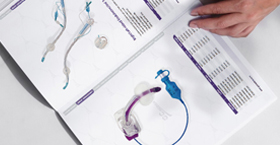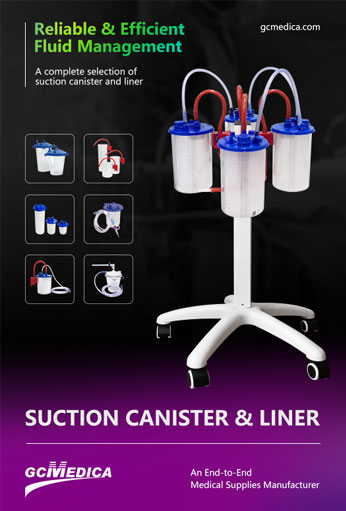An external canister designed for repeated use serves as the durable housing in a medical suction or waste management system. Unlike single-use vessels, a reusable outer canister is engineered for frequent cleaning and sterilization, offering a cost-effective and environmentally friendly solution. Typically constructed of high-grade, autoclavable materials such as polycarbonate or stainless steel, these canisters withstand chemical disinfectants and repeated exposure to high temperatures without compromising structural integrity.
Reusable outer canisters come in various capacities—commonly 1 L, 2 L, 3 L, and 5 L—to accommodate different suction volumes and clinical needs. They are compatible with a range of disposable inner liners or collection bags, which capture fluids and debris, while the rigid outer shell maintains shape and protects against leaks. Graduated volume markings on the interior help clinicians monitor output in real time, aiding in fluid balance assessments and documentation.
The lid or top assembly of the canister incorporates a secure sealing mechanism—often a threaded cap or clamp-style closure—to prevent spills and maintain negative pressure during suction. Integrated ports on the lid facilitate connection to vacuum tubing and overflow protection devices, ensuring uninterrupted suction even when the canister reaches capacity. Some designs include quick-release or bayonet fittings for rapid assembly and disassembly, minimizing the time spent preparing equipment between procedures.
Ease of cleaning is crucial: a smooth interior surface with rounded corners inhibits residue buildup, while a wide-mouth opening allows for thorough manual or automated washing. Most reusable outer canisters are compatible with washer-disinfectors or ultrasonic cleaning systems, and can be steam-sterilized in an autoclave. Color-coded lids or bands can be used to designate canisters for specific departments (e.g., operating room, emergency department), reducing cross-contamination risk.
Durability and safety standards are fundamental. These canisters must comply with relevant medical-device regulations regarding pressure resistance, chemical compatibility, and biocompatibility. Impact-resistant materials ensure the canister can withstand drops or knocks without cracking. Laboratory testing often evaluates cycle life—how many sterilization cycles the canister endures before signs of wear emerge—helping facilities plan replacement schedules.
Accessories enhance functionality: holders or racks secure the canister on suction units or mobile carts, while splash guards and anti-spill baffles further protect staff from exposure. Some outer canisters feature built-in sensor mounts for optional flow or pressure monitoring modules, enabling digital integration with electronic health-record systems. When paired with standardized liners and lids, a reusable outer canister system delivers both operational efficiency and environmental sustainability.
| Feature | Description |
|---|---|
| Material | Autoclavable polycarbonate or stainless steel; chemical-resistant and impact-resistant |
| Capacity Options | 1 L, 2 L, 3 L, 5 L sizes with clear graduated markings |
| Seal & Port Configuration | Threaded caps, clamp-style closures; integrated vacuum and overflow ports |
| Cleaning & Sterilization | Washer-disinfector compatible; steam/autoclave sterilization; smooth interior for easy wash |
| Compliance & Durability | Meets medical-device safety standards; tested for repeated sterilization cycles |
| Accessories | Mounting racks, splash guards, sensor mounts for pressure/flow monitoring |
By combining robust construction, streamlined maintenance, and adaptable features, reusable outer canisters form the backbone of an efficient and sustainable fluid-management workflow in hospitals and clinics.
| Suction Canisters | Suction Liners | Accessories > |


 Français
Français Español
Español Products
Products

 About Us
About Us












